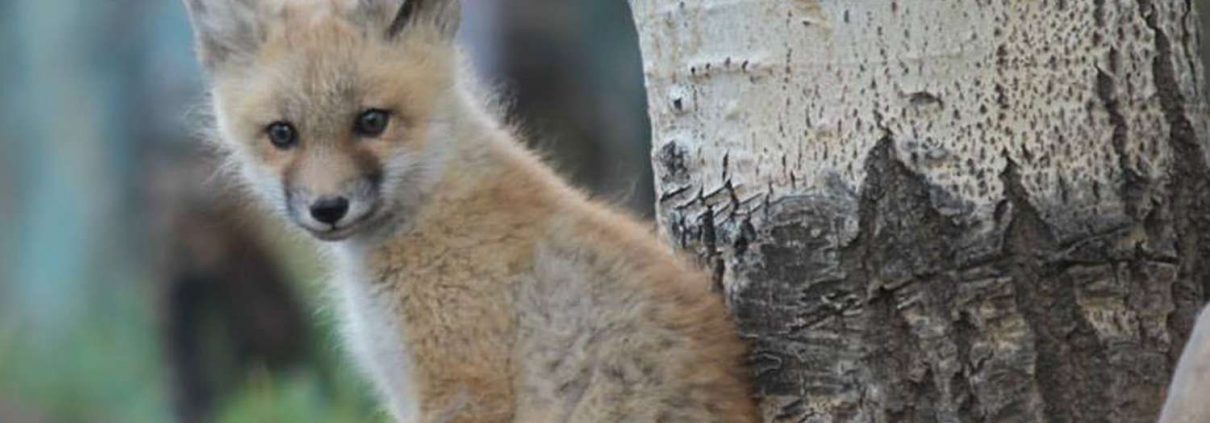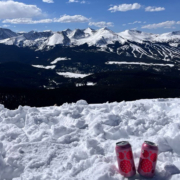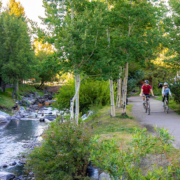Wildlife in Breckenridge: Do’s and Don’ts
Spring has sprung in Breckenridge and that means wildlife is out and about. With the abundance of critters here in Breckenridge, don’t be surprised to see a family of foxes scurrying through town or a moose taking a stroll down the road while you’re visiting. These animals, although majestic and exciting to spot, are on an agenda of their own. Spring is a delicate time for the wildlife here and respecting our trail closures and wilderness areas are critical. Here are some guidelines you should be aware of to protect both the wildlife and yourself
1. Don’t feed the wildlife.
Under no circumstance should anyone be feeding a wild animal. A bear’s main goal is to get fat enough to live through the winter, so be very cautious about what you are leaving around. Leave no trace. A bear can smell food up to 5 miles away, and so during the months of mid-March through early November, don’t leave anything that smells of food in your vehicle or outside near your home. Foxes hang around most lodging properties looking for scraps as well as in town. Be mindful that human food is actually unhealthy for these animals and can prevent certain species from foraging for themselves. When wild animals are fed human food, it will likely result in that animal’s death. If you care about our furry friends, please do not feed them. Our best advice: stay back and observe these creatures in their natural habitat.
2. Mind your dogs.
We aren’t saying you need to leash your dog on a trail where they are able to run free, but please be aware of the rules around you, especially during mud season/spring when the trails and preserves are being carefully monitored to host an atmosphere for these animals. A run in with a moose, mountain lion or porcupine could put you and your dog at serious risk. Not only could we be endangering the habitat for these animals, they could also be potentially dangerous to you and your fur baby.
The types of wildlife you will *most likely* see and general facts about them:
- Fox – Foxes are typically between 12 and 16 inches tall and about 31 inches long including their white-tipped signature tail. They weigh about 6lbs on average and can run up 30mph! A fox’s typical lifespan is about 3-4 years.
- Bear – When standing up, bears can be up to 7 feet tall and weigh in at about 500lbs for males and 300lbs for females. A black bear’s lifespan is around 10 years.
- Moose – The tallest mammal in North America! Male moose, called bulls, have enormous antlers that can grow up to 6 feet wide from tip to tip! A moose can run up to 35mph and can actually stay under water for 30 seconds!
- Mountain goats (watch for these guys on your hikes!) – Super agile, these animals are about 3.5 feet tall and 5.5 feet long. They can weigh anywhere between 100-300 pounds and live anywhere between 12-15 years.
Facts provided by defenders.org
How to interact with the larger wildlife of Breckenridge.
Bear – If you feel as though you may be in bear territory, make noise while you walk. Clap your hands or whistle loudly to help prevent yourself from surprising a bear. Don’t run from a bear! They will think you are prey and could potentially chase you. Also, avoid climbing trees as bears are skilled climbers.
Mountain Lion – They say you don’t see a mountain lion; it sees you first. So, if you are placed in this terrifying situation, the best way to conduct yourself is to stay calm (we know…). Talk firmly and make eye contact. You want to make yourself look as big as possible, so whatever you have on your person, use it to your advantage. NEVER RUN – but step or back away S L O W L Y. We hope you never have to use this advice.
Moose – If a moose charges you, we finally give you permission to RUN. Trying to put something between you and the moose is the best advice we’ve heard. Moose are trying to drive you away, so the faster you can get further away, the better. The moose will feel comfortable as soon as you are a safe distance away and should leave you alone.
So there you have it. A few tips on how to protect the wildlife in Breckenridge, and some fun facts to leave you with a bit more knowledge about these animals. We ask that you try to listen to these rules, and PLEASE: do not feed the wildlife. Enjoy Breckenridge and also, please leave no trace. Use #bestofbreck when you post your camping and outdoor adventure photos of Breckenridge to be featured on our Instagram!








